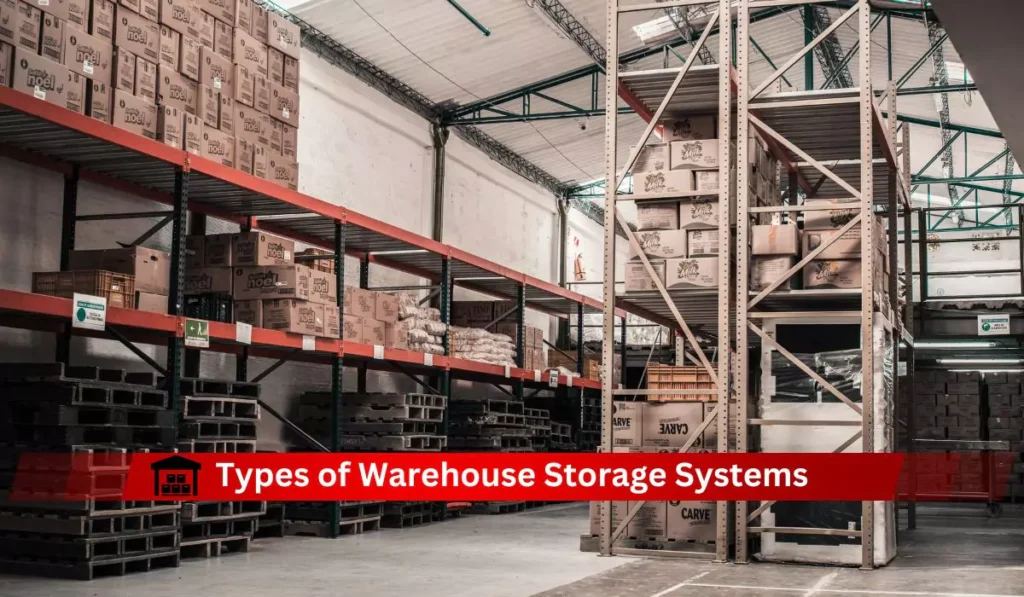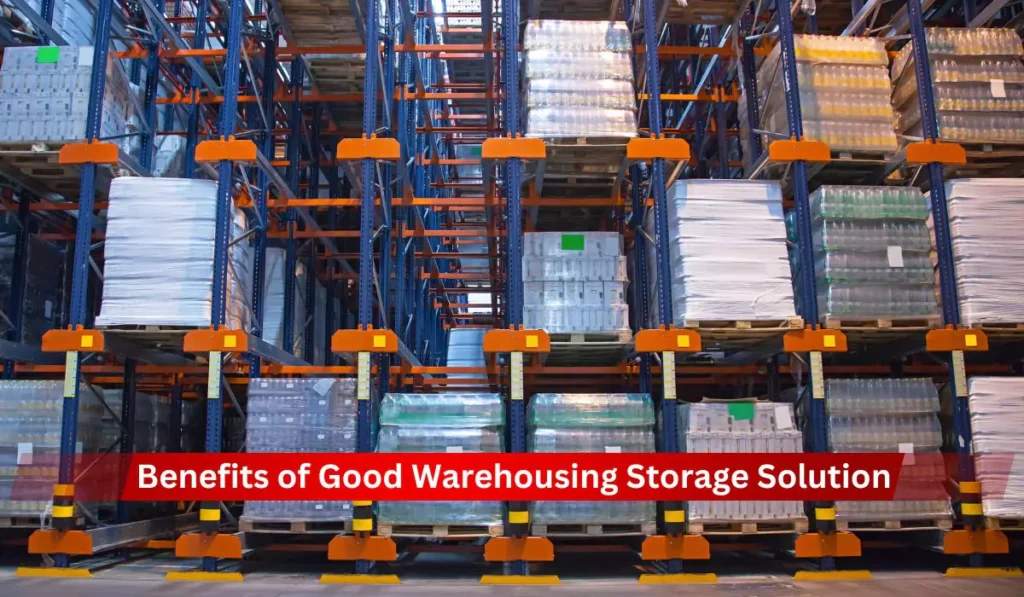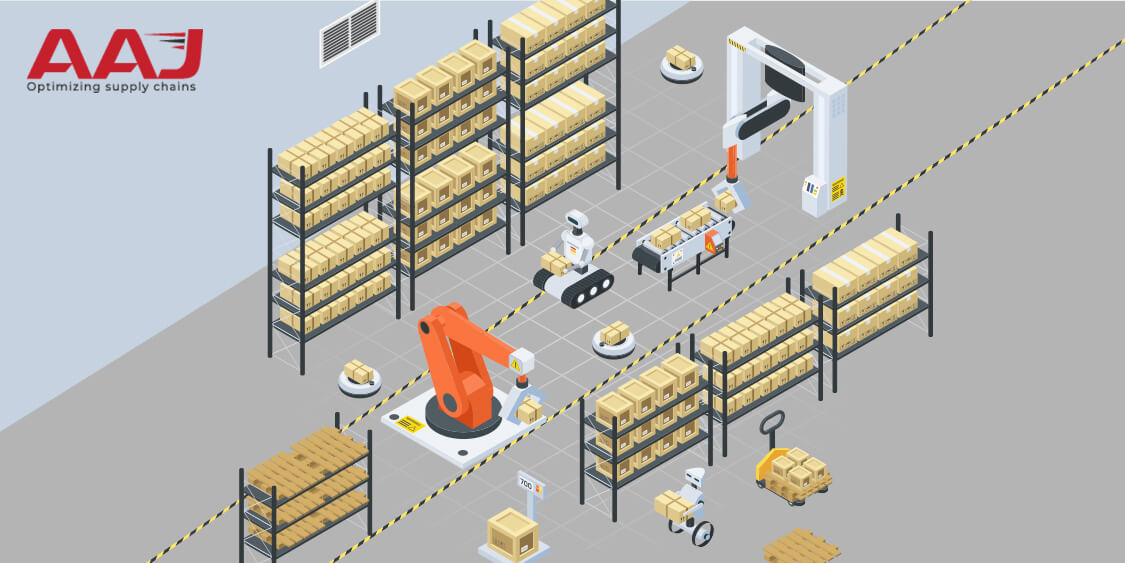The efficiency and productivity of a warehouse are based on its storage system. It implies that the inventories should be stored in the proper boxes and places to keep them properly organized. It also helps find the products at the proper time and ship orders quickly for eCommerce order fulfillment. Warehouses need to add, remove, and organize thousands of SKU units daily and it can be achieved by adopting efficient warehouse storage solutions and smart warehousing.
Many factors need to be considered for choosing the right type of warehouse storage solutions, such as throughput, space, product types, budget, and workforce. The boxes chosen for storing the inventories should be selected carefully to prevent any spoilage. One of the fundamental steps that need to be taken for devising an efficient warehouse is choosing the proper storage system. This selection method should be considered carefully as a considerable sum of money is invested in warehouses and depends on the design and method they fit into the floor plan and processes.
What is Warehouse Storage Solutions?
Warehouse storage solutions are like the brains behind any efficient logistics management. They are well-designed warehouse storage systems that help businesses to store, organize, and manage their inventory. These solutions help maximize space and minimize warehouse space costs. Whether you have a small ecommerce store or a large distribution center, the right storage solution can make all the difference. From racking systems to automated storage, these warehouse solutions help companies manage their stock, ensuring everything is accessible and ready to ship when required. Perfect Storage is like a well-organized closet, but instead of clothes, you’re dealing with thousands of products and goods.
In today’s tech era, where quick fulfillment is the name of the game, having a flexible warehousing storage solution doesn’t help; it’s a must-have!
6 Types of Warehouse Storage Solutions

Before selecting the type of warehouse and storage system, you should get information on the different kinds such that it supports your layout. Let us learn about the popular eCommerce warehouse storage solutions types:
- Mobile Racking Solution
- Static Racking Storage Solution
- Multi-Tier Racking Storage
- Pallet Racking Solution
- Mezzanine Flooring
- Wire Partitions Solution
1. Mobile Racking Solution
Mobile racking storage is a flexible option required for holding your manually-picked items, but the system is built to keep more items in less space. In the mobile racking system, cabinets and shelves are placed on rail or carriage systems, and the fixed aisles are eliminated. The productivity is increased even when the space is less by making the inventory more accessible. Mobile racking warehouse solution designs usually have level tracks that can be either mechanized or manual. Some of them come with locking systems for monitoring and controlling access to the inventory.
2. Static Racking Storage Solution
Static racking are storage systems devised for remaining in one place, as the name implies. This kind is mainly utilized to store lightweight inventory items. The items stored in this kind of storage usually need constant reordering. This warehouse storage solution type cannot be lifted with forklifts, and the static shelving is usually used with inventory that is picked manually, placed, and organized. If you have a large inventory, you should invest in a bigger racking system that can accommodate more weight and be utilized in higher-elevation configurations.
3. Multi-Tier Racking Storage
This kind of warehouse storage system is perfect for products that have a small size but need to be stored in large numbers. The multi-tier racking system is designed in a way to make full utilization of vertical space. No warehouse fits all the sizes; therefore, multi-tier racking options are convenient and agile, with the ability to lessen or add up tiers based on your current needs.
Multi-tier racking also holds lightweight items that should be picked and organized by manual labor. For utilizing this kind of smart warehousing storage solution to its full potential, it is essential to arrange each tier tactically and pack items as closely as possible. At the same time, it is essential to consider the weight limits and abide by the ceiling-to-rack height requirements.
4. Pallet Racking Solution
For the largest and the busiest warehouses, pallet racking warehouse storage solutions are generally used as the centerpiece of the operation. This type of warehouse storage system is generally made out of plastic, metal, or wood. This stores inventory products that are received in big boxes. Based on the height, the boxes are kept on the pallet racking system with the assistance of a forklift or the entire process is automated. There are different sub-categories of the pallet racking storage solution. These include carton-flow racking, coil racking, drive-in racking, cantilever racking, double-deep racking, high-bay racking, drive-through racking, narrow-aisle racking, mobile racking, push-back racking, pallet live racking, vertical racking and shuttle racking. It is considered the cheapest storage mode as you store the products in an infrastructure. It provides you convenient access without resulting in any failure.
5. Mezzanine Flooring
If you have the financial support and the warehousing layout allows, mezzanine flooring solution is productive and assists in saving space in your warehouse. Mezzanine flooring is a second, third, or fourth floor that is made above the original warehouse flooring. Because of the intrusive nature of the construction, this is one of the most expensive options a warehouse can select. Still, it also can provide customized features such as lift systems, lighting, and conveyors.
6. Wire Partitions Solution
Highly advanced warehouse storage solutions that offer great flexibility are wire partitions. Place wires strategically to form cages that are easy to put together and take apart quickly. Sometimes, items inside these partitions need extra protection. Warehouses even use them to create temporary offices for floor managers.
Benefits of Good Warehousing Storage Solution

As we all know, competition in businesses has increased in the past few years. Effective warehousing storage solutions play an important part in ensuring that supply chains run smoothly and efficiently for those businesses. It doesn’t matter whether you are in retail businesses, manufacturing companies, or B2B distribution. Storing, managing, and accessing your inventory can have a major impact on your business profitability. Choosing a high-quality warehousing storage solution can lead to numerous benefits, such as cost savings and improved customer satisfaction. Explore the key benefits of implementing a well-organized and robust warehousing storage system.
1. Optimal Space Utilization
Optimal use of available space is One of the most important benefits of an efficient warehousing storage solution. A well-organized warehouse makes sure that every square foot or meter of space is used effectively. This practice minimizes wasted areas and maximizes storage capacity. Benefits of Space Utilization:
- Better stock management can assure you to store more products without the need for additional space.
- Enhanced accessibility to inventory, reducing time spent searching for items.
- The ability to handle larger volumes of goods during peak seasons without the need for temporary external storage solutions.
Maximized space utilization leads directly to cost savings by reducing overhead expenses, allowing your business to focus on core operations while keeping inventory secure and accessible.
2. Improved Inventory Management
A well-structured warehousing solution helps businesses implement superior inventory management systems, ensuring that they have better control over their stock levels. Proper warehousing allows for real-time tracking of inventory, which is essential for avoiding overstocking or stockouts. Some of the key inventory management benefits include:
- Minimize the risk of product obsolescence: Storing the right amount of inventory controls extra stock from becoming outdated.
- Enhanced order fulfillment: Good inventory management facilitates faster picking and packing that, reducing order processing times.
- Real-time visibility into stock levels helps in demand forecasting and reduces the chances of shortages or overstocking.
With enhanced inventory management, businesses can better meet customer demand, ensuring smooth operations and rarer disruptions.
3. Enhanced Productivity and Efficiency
With the help of advanced warehousing storage solutions, businesses can increase their productivity and operational efficiency in logistics. A well-designed warehouse layout with integrated modern storage technologies, such as automated retrieval systems and RFID tracking, enables employees to perform their duties more quickly and accurately. Explore the steps that help to boost productivity:
- Streamlined processes: Organized storage allows for faster picking, packing, and shipping of goods.
- Reduced employee costs: With efficient layouts and devices, fewer workers are needed to manage inventory.
- Minimized errors: Automated systems help prevent human error in picking and inventory tracking, ensuring accuracy in order fulfillment.
When employees have easy access to inventory, their productivity will increase. That leads to faster deliveries and improved client satisfaction.
4. Cost Savings
Good warehousing storage directly contributes to cost savings in different ways. An efficiently organized warehouse reduces operational costs while improving efficiency. Here are some of the areas where you can save costs:
- Reduced wastage: Do the Proper storage that helps prevent damage to goods, reducing losses due to spoilage or breakage.
- Lower employee costs: As mentioned above, efficient warehousing systems require fewer employees to manage operations, saving on wages.
- Optimized transportation costs: With accurate inventory tracking and faster fulfillment, businesses can consolidate shipments and reduce logistics costs.
These cost savings can be reinvested into other areas of the business, driving growth and improving profitability.
5. Enhanced Customer Satisfaction
Customer satisfaction is a critical factor for any business, and efficient warehousing storage solutions play a significant role in achieving it. When companies can fulfill orders quickly and accurately, customers are more likely to have a positive experience. Here’s how good warehousing improves customer satisfaction:
- Faster shipping: Well-organized inventory systems allow for quicker order processing, which translates to faster deliveries.
- Accurate order fulfillment: With efficient picking systems, the chances of shipping incorrect items are reduced, leading to fewer returns and exchanges.
- On-time deliveries: With better warehouse management, businesses can meet delivery deadlines consistently, enhancing customer trust.
Satisfied customers are more likely to become repeat buyers and recommend your services to others, contributing to long-term business growth.
6. Improved Security and Safety
Modern warehousing storage solutions offer enhanced security measures to protect both employees and inventory. Warehouses equipped with state-of-the-art surveillance systems, access control, and automated tracking technologies ensure that your goods are safe from theft, damage, and accidents. Key security benefits include:
- Protection against theft and pilferage: Surveillance systems and access control measures prevent unauthorized access to inventory.
- Damage prevention: Proper storage racks, shelving, and climate control systems help protect fragile or perishable items from damage.
- Safer working environment: Well-organized warehouses reduce the chances of accidents, such as slips, falls, or collisions with equipment.
By minimizing losses due to theft or damage, businesses can further improve their bottom line while ensuring a safe workplace for employees.
7. Scalability for Business Growth
A flexible and scalable warehousing storage can accommodate the changing needs of your business. As your business grows, your warehousing needs will evolve, requiring more space and efficient processes to handle increased inventory. The ability to scale up or down based on demand is a critical advantage of modern storage solutions. Benefits include:
- Adaptability to seasonal fluctuations: During peak seasons, an adaptable warehouse system can handle increased volumes without compromising efficiency.
- Room for expansion: As your business expands, you can adjust your storage solution to accommodate new products, regions, or services.
- Seamless integration with e-commerce: Many warehousing systems now integrate easily with e-commerce platforms, making it easier to manage online orders and returns.
Scalability ensures that businesses can continue to grow without experiencing bottlenecks or delays in order fulfillment.
8. Better Compliance with Industry Standards
In some industries, businesses must comply with strict regulations and standards regarding the storage and handling of products. High-quality warehousing storage solutions help companies to stay compliant with these regulations, ensuring that products are stored, managed, and shipped according to industry standards. Some compliance benefits include:
- Adherence to safety and hygiene standards: Particularly important for food, pharmaceuticals, and perishable goods.
- Temperature and humidity control: Warehouses with advanced climate control can maintain optimal conditions for sensitive items.
- Efficient documentation and tracking: Modern warehousing systems provide detailed records of inventory movement, ensuring compliance with regulatory audits.
Compliance not only avoids legal penalties but also boosts your reputation as a reliable and responsible business.
9. Environmentally Friendly Practices
Sustainable warehousing storage can help businesses minimize their environmental footprint. Green practices in warehousing can lead to both cost savings and positive branding by showcasing your company’s commitment to sustainability. Some eco-friendly benefits include:
- Energy efficiency: Warehouses designed with energy-efficient lighting, insulation, and equipment help reduce energy consumption and costs.
- Waste reduction: Implementing recycling programs and reducing material waste during the packing process contribute to sustainability.
- Reduced carbon footprint: Streamlined logistics and transportation processes lower the environmental impact associated with shipping and receiving goods.
Adopting eco-friendly warehousing storage solutions is not only good for the environment but also enhances the company’s public image.
Investing in a good warehousing storage solution offers numerous benefits, from increased efficiency and productivity to cost savings and improved customer satisfaction. By optimizing space, improving inventory management, and ensuring safety, businesses can gain a competitive edge while scaling their operations to meet growing demand.
Wrapping Up
Various types of warehouse storage systems are available. As we progress into the future, the systems are becoming more robust, affordable, lightweight, and technically equipped. All of these systems have different advantages for different warehouses. You should not consider a system that does not satisfy your needs. Instead, you should choose one that meets the requirements and supports the operations flexibly as it prospers and grows.




